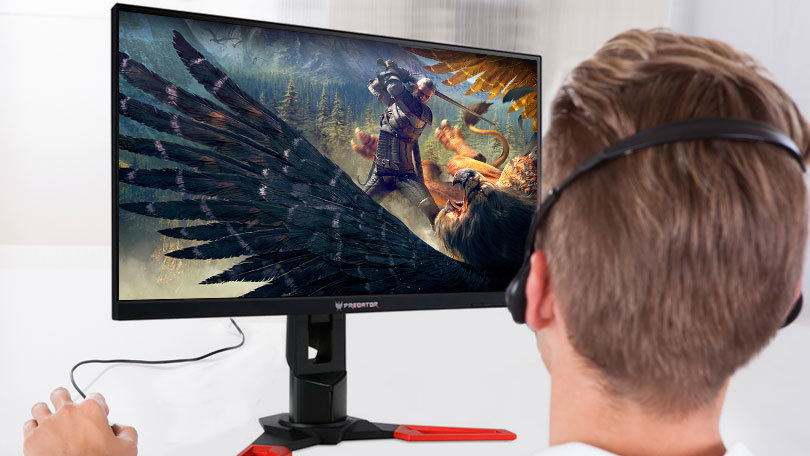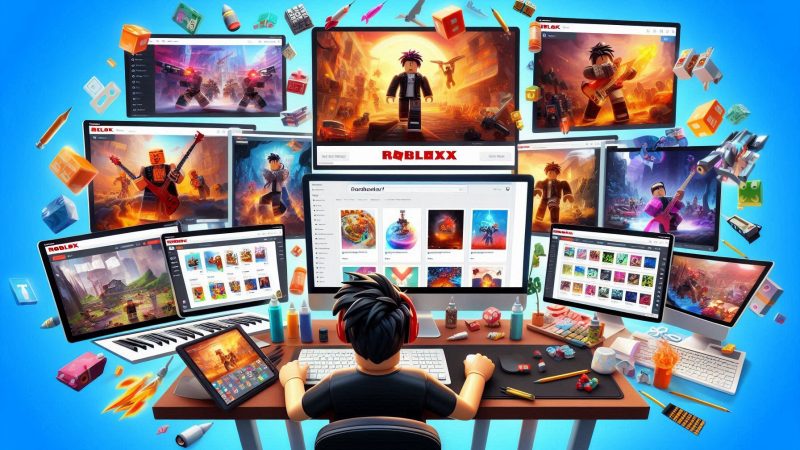What Makes a Monitor Good for Gaming and Different from Regular display?

If you are a gamer who loves to spend most of the time looking at the monitor, don’t you think you should consider a good monitor? That displays crystal clear graphics and helps you protect your eyes from various problems.
But are you using a gaming monitor or just an ordinary monitor?
A gaming monitor is a whole lot different thing from regular monitors. Gamers need a good monitor that helps them make their gaming experience incredibly perfect, especially when talking about competitive players. Usually, gaming monitors have a higher response time and refresh rate as compared to regular monitors.
That is why gaming monitors run your games more smoothly than ordinary monitors. But with all these good things there is a significant drawback as well. Gaming monitors might be expensive for some gamers. This will help you maintain your budget and your gaming experience side by side.
In this article, we are going to talk about the significant differences between a gaming monitor and a regular screen. Plus, why a gaming monitor is reasonable as compared to a regular one. So, let’s get started.
Features of a Gaming Monitor
Here are some main things that make up to form a gaming monitor.
1. Panel Size and Resolution
A gaming monitor usually offers 27 inches of the screen as standard panel size. The average resolution provided by the gaming monitors should be higher, for example, 1920 x 1080 pixels
The new additional 27 inches gaming monitors are wide and quad high definition that offer a maximum resolution of 2560 x 1440 pixels.
A higher pixel count helps to provide a sharper image.
2. Panel Technology
The next important thing to consider in a gaming monitor is the panel technology, and there are many panel technologies that are equipped in gaming monitors.
Among them, the Twisted Nematic (TN) panels are the most affordable and trendy in the market because they deliver fast and quick pixel responses and refresh rates.
Some gaming monitors consist of Vertical Alignment (VA) panels because of their high contrast ratio, rich colors, and increased ability to display deep black colors. However, gamers with Vertical alignment panels may notice ghosting effects that reduce the gaming performance.
Another favorite type is In-plane switching panels. The IPS panels are pretty cool with all color quality, grey scale solid performance, and wide viewing angles. They are pretty good, but the response rate is the poorest.
3. Pixel Response and Refresh Rate
`Gaming monitors tend to have a faster pixel response with a high refresh rate. They are commonly grey to grey pixel response spec.
Gaming monitors that have a grey to grey response of 2 milliseconds or lesser are said to be the best. But even if a gaming monitor has a grey to the grey response of 4 milliseconds, it is still acceptable for gaming.
The commonly measured refresh rate in most of the LCD gaming monitors is almost 60 Hz. However, at this refresh rate, still, most of the fast-moving images seem to be blurry. That is why gaming monitors should have a refresh rate of 120 Hz or higher, which may help to fix the blur images as well as the tearing.
4. Video Inputs and Features
Gaming monitors should consist of a wide amount of video inputs. This is because video inputs allow for multiple connections with things such as gaming consoles, for example, PS4, and Xbox, etc.
The Dual HDMI ports are said to be ideal for the majority of these gaming consoles that use HDMI. However, if you have a high end graphics card that is capable of offering both DisplayPort and DVI connectivity then it would be good for you.
Features of a Regular Screen
Here are the features of a regular screen that differ from gaming monitors.
1. Connectivity Type:
While using a general monitor for different reasons, you should check the connectivity type of your monitor.
There are some output ports that our computer accepts and makes sure that the monitor contains the same type of ports. For example, Video Graphics Array (VGA), Digital Visual Interface (DVI), High Definition Multimedia Interface (HDMI).
2. Screen Size and Aspect Ratio
Well, you can choose the screen size as per your PC cost budget and performance. The monitors with large screen sizes are considered to be better for graphic-related tasks such as watching or editing videos.
But on the other hand, if you want to create higher productivity then large displays could be better as well.
But some monitors are way too big for a comfortable desk. For example, a 34 inches monitor may be too big for standard PC viewing distance.
The ideal aspect ratio for monitors should be 16:9 or 16:10 in order to make a fully ideal screen video viewing. The 16:10 may be a little taller but it is ideal to use for professionals doing graphics work.
On the contrary, 16:9 is the best and ideal aspect ratio for most of the users.
3. Screen Resolution
Well for regular screens, the higher resolution is quite better. But regular monitors often come in cheap and they have a resolution of at least 1920 x 1080 pixels. And the standard format for this resolution is 1080p for most of the LCD models.
4. Refresh Rate and Contrast Ratio
The refresh rate for regular screens with LCD panels is 60 hertz however gamers prefer a fast refresh rate for smoother and more dynamic animation that is why a 60 Hz regular screen is not recommended for gamers.
Most of the regular LCD panels offer a contrast ratio of 30,000:1 ratio or 600,000:1 ratio but if you place both of these monitors with one another then you might not even notice the difference.
I hope that this comparison will help you understand why a gaming monitor is better for gaming as compared to a standard regular screen.






